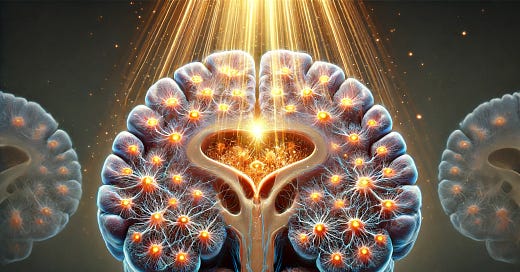Your Brain Loves (And Needs) Sunlight
Multiple perspectives on the brain in relation to sunlight
The brain is no different than any other organ in the human body.
It is a light-sensing mechanism because it uses sunlight to perform a number of unfathomably complex circadian functions.
Let’s start with the neuroectoderm.
Your brain, eyes, and skin are made of the same tissue when you’re an embryo in your mother’s womb. Formation of the neuroectoderm is the first step in the development of the nervous system.
After recruitment from the ectoderm, the neuroectoderm undergoes three stages of development:
1. Transformation into the neural plate.
2. Transformation into the neural groove (with associated neural folds).
3. Transformation into the neural tube.




